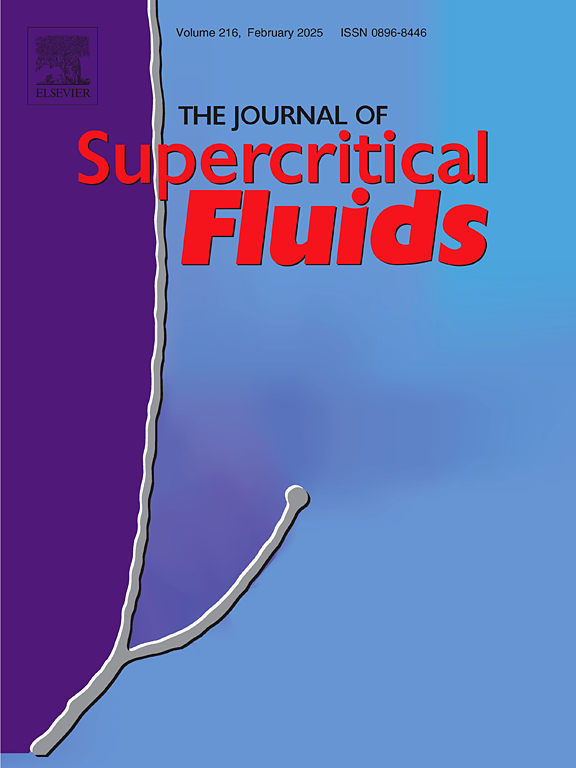超临界co2萃取大麻的生物活性:与常规萃取方法的比较
IF 4.4
3区 工程技术
Q2 CHEMISTRY, PHYSICAL
引用次数: 0
摘要
本研究采用超临界二氧化碳(scCO₂)、索氏(Soxhlet)和浸渍三种方法对大麻(Purple 52)的提取率、大麻素谱和生理效应进行了评价。高效液相色谱(HPLC)分析证实大麻二酚(cannabidiol, CBD)和大麻二酸(cannabidiolic acid, CBDa)是大麻提取物中的主要大麻素,大麻样品在140℃下脱羧1 小时,CBD与CBD+CBDa的比值超过99 %。以乙醇为共溶剂的scCO 2法CBD得率最高,与纯scCO 2萃取相比,CBD得率提高37.1% %。生理评价表明,scCO 2提取物具有较强的抗氧化和抗炎活性,其中2,2′-二苯基-1-吡啶酰肼(DPPH)自由基清除活性和类黄酮含量最高。此外,scCO 2提取物可显著抑制脂多糖(LPS)诱导的RAW 264.7细胞中白细胞介素-1β (IL-1β)和白细胞介素-6 (IL-6)的水平,显示出强大的抗炎作用。本文章由计算机程序翻译,如有差异,请以英文原文为准。
Biological activities in supercritical CO₂-extracted cannabis: Comparison with conventional extraction method
This study evaluates the extraction yields, cannabinoid profiles, and physiological effects of Cannabis sativa L. (Purple 52) using three methods: supercritical CO₂ (scCO₂), Soxhlet, and maceration. Validated high-performance liquid chromatography (HPLC) analysis confirmed cannabidiol (CBD) and cannabidiolic acid (CBDa) as the dominant cannabinoids in hemp extracts, and decarboxylation of hemp samples at 140℃ for 1 hour achieved a CBD to CBD+CBDa ratio of over 99 %. The scCO₂ method with ethanol as a co-solvent demonstrated the highest CBD yield, yielding 37.1 % higher CBD content compared to neat scCO₂ extraction. Physiological assessments revealed scCO₂ extracts had superior antioxidant and anti-inflammatory activities, with the highest 2,2′-diphenyl-1-picrylhydrazyl (DPPH) radical scavenging activity and flavonoid content. Furthermore, scCO₂ extracts significantly suppressed interleukin-1β (IL-1β) and interleukin-6 (IL-6) levels in lipopolysaccharide (LPS)-induced RAW 264.7 cells, demonstrating potent anti-inflammatory effects.
求助全文
通过发布文献求助,成功后即可免费获取论文全文。
去求助
来源期刊

Journal of Supercritical Fluids
工程技术-工程:化工
CiteScore
7.60
自引率
10.30%
发文量
236
审稿时长
56 days
期刊介绍:
The Journal of Supercritical Fluids is an international journal devoted to the fundamental and applied aspects of supercritical fluids and processes. Its aim is to provide a focused platform for academic and industrial researchers to report their findings and to have ready access to the advances in this rapidly growing field. Its coverage is multidisciplinary and includes both basic and applied topics.
Thermodynamics and phase equilibria, reaction kinetics and rate processes, thermal and transport properties, and all topics related to processing such as separations (extraction, fractionation, purification, chromatography) nucleation and impregnation are within the scope. Accounts of specific engineering applications such as those encountered in food, fuel, natural products, minerals, pharmaceuticals and polymer industries are included. Topics related to high pressure equipment design, analytical techniques, sensors, and process control methodologies are also within the scope of the journal.
 求助内容:
求助内容: 应助结果提醒方式:
应助结果提醒方式:


